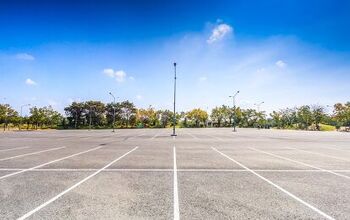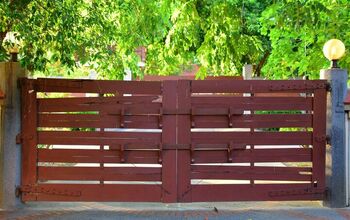How To Build A Floating Dock (Step-by-Step Guide)

A floating dock is a convenient way to extend your existing dock. Docks allow for more space in the water. You can fish, attach a boat, or even sit in your lawn chair and enjoy a sunset. Floating docks can be purchased pre-built. However, they are also pretty simple to make on your own.
To build a floating dock, you will need three main components: floats to keep your dock from sinking, pressure-treated wood for a frame, and decking boards to create the walking surface.
In this article, we cover the benefits of installing a floating dock. We will also give you clear instructions so you feel confident doing it yourself.
Let’s get into it.
Do You Need Boat Dock Builders?
Get free, zero-commitment quotes from pro contractors near you.

Benefits of a Floating Dock
The floating dock has many perks. Here’s a list of reasons why you should consider building one on your lake or pond:
- Quick and Easy to Build – no need to get in the water
- Movable
- Great Way to Extend an Existing dock
Easy to Build
Floating docks are pretty simple to construct. As you will see in the sections below, you could probably build your floating dock within a single weekend with the help of a friend.
They don’t require any getting down into the water or placing posts. This ability to stay dry is also nice because it means you can build your floating dock in the cool spring before using it during the summer.
The material list isn’t long, and you don’t need any fancy tools to construct. The floats to construct the dock can be ordered from Amazon – that’s pretty easy.
Floating Docks are Simple to Move
If you decide you need your dock somewhere else or just want to bring the section in for the winter, it’s easy to move your floating dock. However, you can also add another section to a floating dock if you want more space.
Alright, let’s jump into actually building your floating dock.
Floating Docks are an Easy Way to Extend an Existing Dock
If you want to build onto your deck, a floating dock is an easy way to do it. Within a weekend, you could have another eight feet added to your current dock.
Four Steps to Build a Floating Dock
The first step to anything is planning. We recommend you start with a manageably-sized section that can be moved by several people if necessary. For our purposes, we are going to build a dock that is eight feet long and four feet wide.
Here is a list of materials you’re going to need:
- Four 2x8s for the outside frame
- Three 2x4s for the beams under the deck
- Corner brackets
- Hanger bracket for 2x4s
- Screws/nails
- Deck planks
- Dock Floats
- Dock Connector Hinge
(Make sure all boards are pressure treated – or use other water-safe material)
Here is a list of tools needed.
- Drill
- Saw
- Bolts
- Nails or deck screws
Alright, now that you’ve got your equipment, here are the steps to construct your floating dock:
- Construct Frame
- Attach Floats
- Attach deck boards
- Secure the Hinge
Remember, always stay safe when working near the water. If the weather is cold, and you’re working near the deep end of a dock, you’d be wise to wear a floatation device and have a friend nearby. Many people have fallen into the water while trying to construct a dock, so be careful and don’t do anything that makes you uncomfortable.
Alright, let’s begin.
Step 1: Construct the Frame of a Floating Dock
Take your 2x8s and prepare them first. Since our deck will be eight feet long and four feet wide, we will need to make sure we measure and cut our boards accordingly.
Most 2x8s can be purchased at 8 feet in length already. However, many are longer. Be sure to measure and cut them to proper length if needed. Of course, you can modify these dimensions for your deck’s needs.
Also, remember to use pressure-treated wood. If you purchase untreated wood, your deck will begin to rot before you know it. If you’d rather no use pressure treated, you can look into aluminum or artificial board options. After making the cuts, take your four boards and form a perfect rectangle. Then screw the corners together. After you’ve joined the corners, we recommend adding additional stability with metal corner braces.
Now it’s time to attach the interior cross beams. For these, you’ll want to go parallel with the 8-foot sides. So, you’re going to need three interior beams. This will give you five total parallel supports with 12-inch gaps.
At this point, remember that you are constructing your dock upside down, and you will be flipping it over after you’ve placed the floats. Take the hanger brackets for your two by fours and begin installing the joists. You want to ensure that everything is good and snug. Also, remember that you want to two by fours to be flush with the 2 by 8s.
Great job, you have a fully framed dock. It’s time to attach the floats.
Step 2: Connecting the Floats
Now it’s time to connect the floats to your dock. For our purposes, we are going to use three floats that run perpendicular to the dock. If you follow the link for floats in the equipment list, you’ll see that our floats are 2 feet wide and four feet long.
After we are finished installing, there will be two on each end with one in the middle. There will be about a one-foot space between them.
To attach the floats, you’ll need some bolts and a large drill bit. The floats will have connections points. These are like slots on the top of the float. You will place the float with these slots facing into your frame. Mark where the slots fall on the wood with a pencil and then drill the hole with your large bit.
You can use bolts or lag screws. However, if you use bolts, you need to add several more cross beams under the dock. These will be laid on their side so you have a surface to attach the floats easily. Otherwise, you could use a thick gauge wire to bind the floats to the frame.
You want to ensure that the floats are snuggly secured onto your frame. If one of these floats becomes loose, it could separate and drift away. A missing float will cause instability or even sinking.
Step 3: Attach Deck Boards
Now you need a surface to stand on. Depending on your floating dock size, you can apply these while the dock is still on land, or you can choose to connect your dock first and then carefully place the boards.
If you choose to place the deck boards while in the water, wear a life jacket and be extremely careful that you don’t fall in. Even with the floats in place, your dock will wobble a bit, making it easy to fall.
Regardless of your method, you’re going to cut 4-foot deck boards and begin placing them on your dock. You can secure them with screws or a nail gun. Be careful not to puncture the floats while you do this. You don’t want any leak points.
If you’re using wood, you may want to seal the deck boards. See our article on painting pressure treated wood.
Step 4: Attach Your Hinge and Secure the Floating Dock
You can choose to do this before you attach the deck boards. Regardless, here’s what you need to know.
The hinge will ensure that your floating dock is able to move a bit. If you just bolted a floating dock directly to the footed dock, you will place both structures under a lot of stress. When the lake water is a bit rough, the hinge will help absorb some of the movement, instead of directing it into your structure.
See the link in our equipment list for the hinge we are using. Attaching the hinge is straight forward. Just be sure you measure and keep both parts of the hinges aligned.
The nice thing about these hinges, it that they are easily dismantled if you choose to move your floating dock. Great job – you’ve successfully added a floating section to your dock.
If you’re worried about your treated wood becoming warped, see our article on how to prevent it.
Do You Need Boat Dock Builders?
Get free, zero-commitment quotes from pro contractors near you.

Related Questions
Generally, this shouldn’t be an issue. Make sure there is space around your dock so that when the water begins to freeze, your dock has some space to move around. Also, you want to make sure there is no water inside your floats. If so, this water will freeze, potentially causing damage to your floats. Also, a small floating dock is more feasible to remove for winter.
How Many Floats to I Need For my Floating Dock?This will depend on what type of float. The float you buy will give you a rating of how much weight it can hold up without sinking. Be sure to follow all manufacturer’s guidelines. In the end, it’s better to be cautious and err on the side of too much floatation. However, you don’t want your dock to become unstable.
Is a Floating Dock Stable?While never as stable as a fully secured dock, a floating dock can be plenty stable if it is properly built and anchored.

Gideon is a writer and hobby woodworker. He enjoys working on projects small and large-everything from crafting boxes and benches, to replacing carpet and landscaping a yard.
More by Gideon Zielinski



























